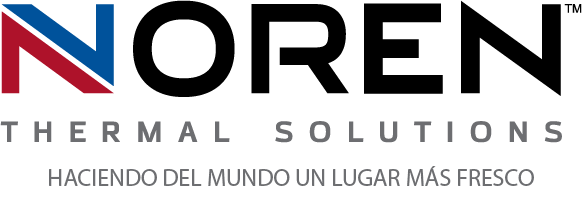 Companies in different industries typically have different needs when it comes to their technologies. Manufacturing and many other processes differ, and the way companies use technology to achieve those processes are often tailored to their specific industries. However, there are some needs and concerns that span every industry, no matter the field. For example, electrical thermal management, or the process of effectively managing electrical waste heat, is common for any company that utilizes virtually any kind of technology. When it comes to electrical thermal management, many companies’ needs can be efficiently and reliably met with the help of modern heat exchangers.
Companies in different industries typically have different needs when it comes to their technologies. Manufacturing and many other processes differ, and the way companies use technology to achieve those processes are often tailored to their specific industries. However, there are some needs and concerns that span every industry, no matter the field. For example, electrical thermal management, or the process of effectively managing electrical waste heat, is common for any company that utilizes virtually any kind of technology. When it comes to electrical thermal management, many companies’ needs can be efficiently and reliably met with the help of modern heat exchangers.
Keeping electrical enclosures cool
Keeping electrical enclosures, such as control panels and more, has always been an essential part of electrical thermal management. Today, it remains one of the most common thermal management needs across every industry, and heat exchangers have proven themselves as the optimal solution for cooling most types of electrical enclosures. The secret to their success lies largely in their simplicity; unlike traditional cooling solutions, heat exchangers utilize natural methods of transferring heat, using an eco-friendly cooling fluid instead of chilled air. The process of transferring heat with a cooling fluid inside of a tightly controlled loop requires far less energy, and less complicated equipment, than more traditional cooling solutions.
Removing heat from plastic molds
The way heat exchangers make use of natural heat transfer processes helps them maintain optimal operations for cooling enclosures continuously. It also provides a way for heat exchangers to serve several other highly important thermal management functions beyond traditional electrical enclosure cooling. For instance, removing heat is also a vital component in the operations of plastic molding companies. After the superheated plastic is poured into the mold, the pace at which the heat can be removed (and the evenness with which it’s removed) can dictate how productive any company is. With thermal pins, which utilize specialized heat exchanger technology, companies can continuously remove heat from plastic molds in a near isothermal manner.
Facilitating efficient wastewater treatment
Removing heat is only one step of the heat transfer process. Once the cooling fluid within a heat exchanger absorbs the heat, the next step is for the fluid to do something with it. In a traditional heat exchanger application, that would mean transferring the heat to a cooler area of the heat exchanger, such as a custom heat sink, to dissipate it safely away from electrical components. Once the heat is released, the fluid can condense back into liquid and flow back where it’s needed to continue absorbing and transferring more waste heat. However, companies in many different industries are now utilizing those same capabilities to harness and repurpose waste heat to supplement the energy needed for other processes. That includes wastewater treatment processes designed to help companies boost their eco-friendly operations and lower their environmental footprints.
For more information about how heat exchangers meet industrial thermal management needs, call Noren Thermal Solutions in Taylor, TX, at 866-936-6736.







